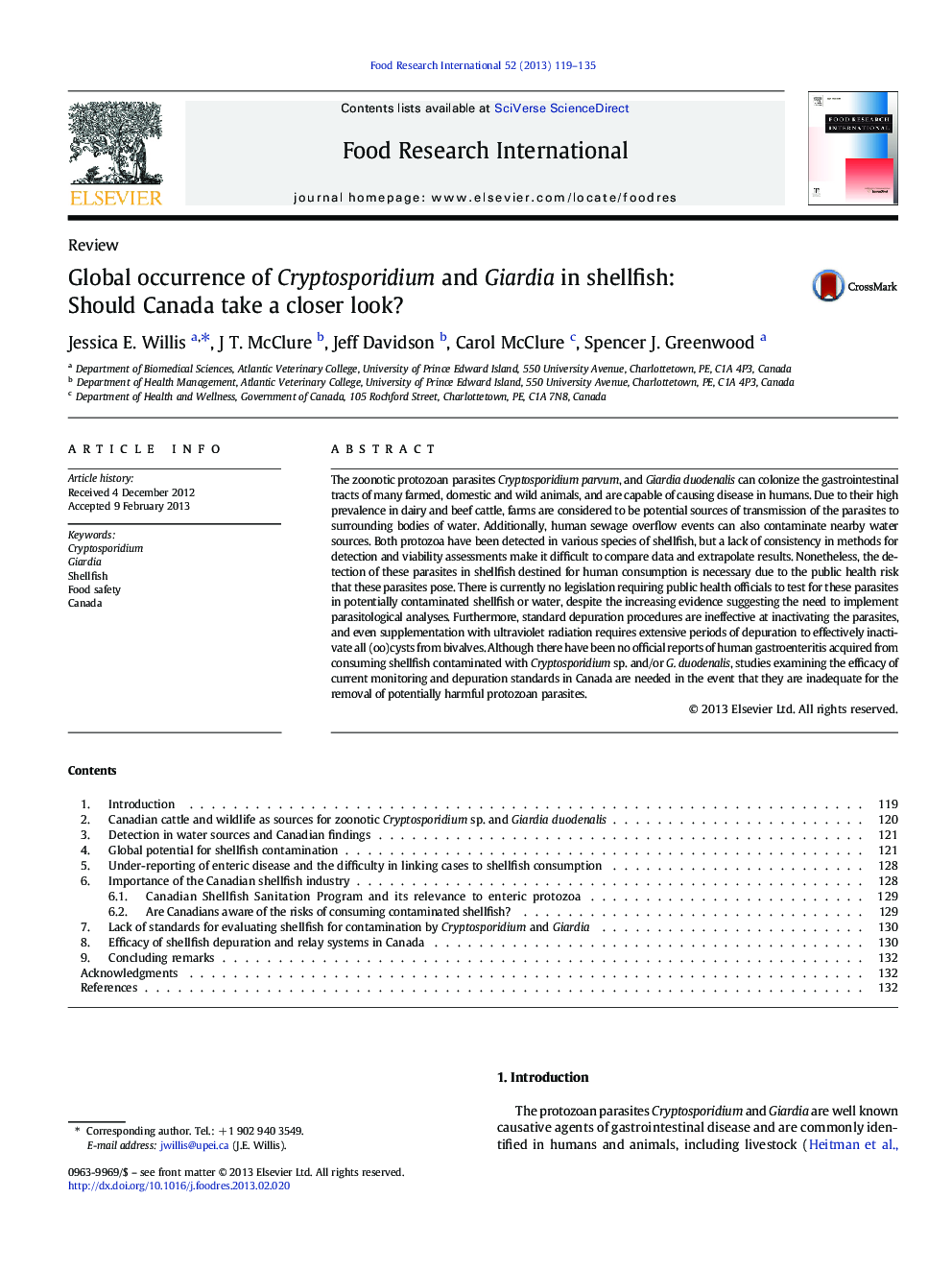| Article ID | Journal | Published Year | Pages | File Type |
|---|---|---|---|---|
| 6398163 | Food Research International | 2013 | 17 Pages |
Abstract
The zoonotic protozoan parasites Cryptosporidium parvum, and Giardia duodenalis can colonize the gastrointestinal tracts of many farmed, domestic and wild animals, and are capable of causing disease in humans. Due to their high prevalence in dairy and beef cattle, farms are considered to be potential sources of transmission of the parasites to surrounding bodies of water. Additionally, human sewage overflow events can also contaminate nearby water sources. Both protozoa have been detected in various species of shellfish, but a lack of consistency in methods for detection and viability assessments make it difficult to compare data and extrapolate results. Nonetheless, the detection of these parasites in shellfish destined for human consumption is necessary due to the public health risk that these parasites pose. There is currently no legislation requiring public health officials to test for these parasites in potentially contaminated shellfish or water, despite the increasing evidence suggesting the need to implement parasitological analyses. Furthermore, standard depuration procedures are ineffective at inactivating the parasites, and even supplementation with ultraviolet radiation requires extensive periods of depuration to effectively inactivate all (oo)cysts from bivalves. Although there have been no official reports of human gastroenteritis acquired from consuming shellfish contaminated with Cryptosporidium sp. and/or G. duodenalis, studies examining the efficacy of current monitoring and depuration standards in Canada are needed in the event that they are inadequate for the removal of potentially harmful protozoan parasites.
Related Topics
Life Sciences
Agricultural and Biological Sciences
Food Science
Authors
Jessica E. Willis, JT. McClure, Jeff Davidson, Carol McClure, Spencer J. Greenwood,
